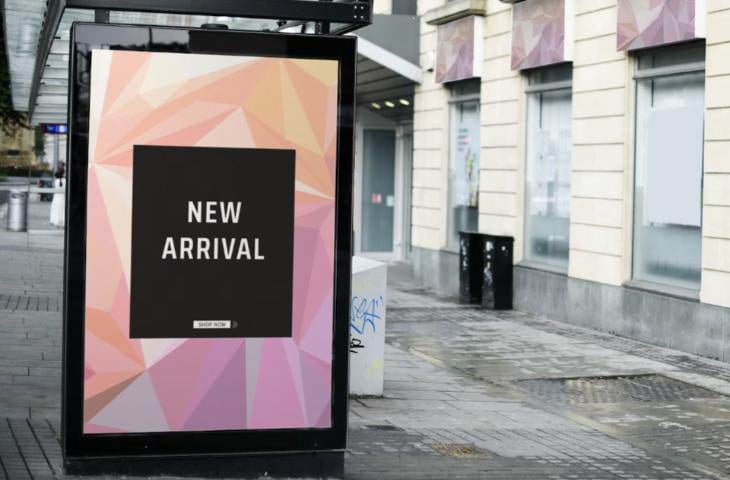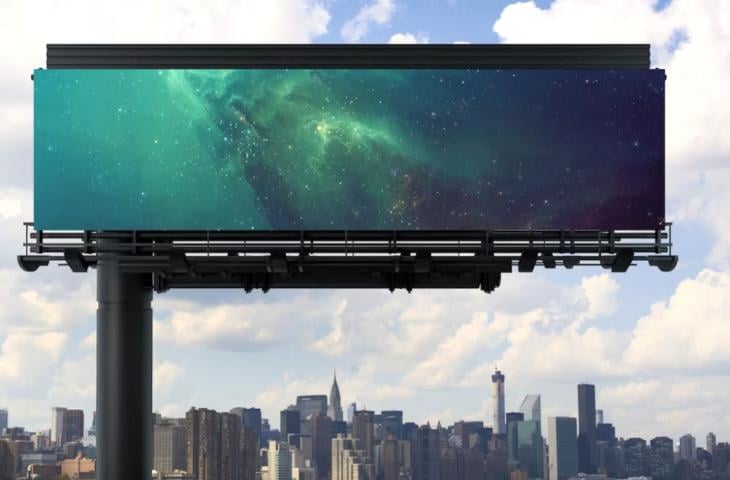
Identifying Your Business Needs and Goals for Digital Signage
Digital signage has changed the game for businesses. It has given them the opportunity to level the playing field, gain visibility with a broader audience, attract them to engage with their brand, and convert viewers into paying customers.
Because of these benefits that directly affect a company’s bottom line, businesses, big and small, are beginning to explore digital signage solutions for their marketing and communication needs.
There’s no doubt that digital signage is effective. With their dynamic, eye-catching displays, they are able to capture 400% more views than traditional signage, increase customer satisfaction by 46%, and improve brand awareness by 47.7%.
But in order to reap all these benefits and more, digital signage needs to be optimized to help you achieve your business goals. Your objectives form the foundation of your digital signage campaign and influence all the factors that make it successful.
The Importance of Setting Objectives for Digital Signage
The digital signage market is expected to value USD 45.50 billion by 2031, growing at a CAGR rate of 7.20% from 2023. This just goes to show how many businesses are now beginning to adopt this new technology into their campaigns.
But joining the trend and utilizing digital signs for your business isn’t enough – you need to know why you’re making the investment and what you’re looking to get from it. Your displays are powered not just by sophisticated hardware and robust software. At the core of your digital signage campaign are your company’s goals and objectives.
Identifying your business needs and objectives will help you maximize your investment and ensure that every aspect of your digital signage is working towards achieving your goals, whether that’s improving brand awareness, enhancing customer experiences, or boosting sales and revenue.
How to Set Goals for Digital Signage
So, how exactly do you set concrete goals for your digital signage campaign? Here are some tips.
Set Measurable Objectives
One popular framework in goal-setting is SMART, which stands for specific, measurable, attainable, relevant, and timely. Using this approach, you can set clear objectives that lay down the foundation for your entire digital signage campaign.
For example, your goal might be to increase sales during a specific time of year, like the holiday season. Or increase productivity among your employees in a specific department, whether production or accounting.
Visualize Your Objective

Visualizing your objective means creating a visual representation to help you and your team understand your goals and their intended outcome. Doing this also allows you to provide a daily reminder of the objective, keeping all parties focused on achieving success.
Build a Strong Business Case
In case you need approval from decision-making bodies about adopting digital signage solutions, you need to be able to build a compelling business case that highlights the importance of making the investment.
While the first thing that comes to mind is to discuss the surface-level benefits of digital signage, it’s also important to inject statements about how those benefits align with the company’s vision and goals.
For example, you might focus on how digital signage can help save time and costs, supported by statistics and actual computations. Or how social media walls can increase engagement and boost your online presence.
Above all, show how digital signage is the best solution for achieving your objectives and how it competes with traditional signage solutions. Make a convincing case on how digital signage can help drive tangible results for the business.
Consider Your Audience
While your objectives primarily influence how you use digital signage, it’s also important to consider your audience, i.e. the people who will be viewing your displays and acting on them. It’s crucial that you understand your audience and align your objectives with their preferences.
For example, if your goal is to raise awareness about new products your brand is offering, simply flashing images of them won’t be effective because you didn’t consider your audience and their behaviors, preferences, and desires.
A better approach would be to include information about how those products would benefit them or where they can find them. Or advertise exclusive offers and limited-time deals to create a sense of urgency.
At first glance, aligning your business needs to those of your audience might seem like a difficult prospect. But if you take the time to sit down and think about it, you’ll realize that what you’re aiming for is not fundamentally different from what your audience desires.
Implementing Your Digital Signage Campaign
Your business objectives serve as the ‘why’ behind your digital signage campaign. They’re the basis for the next decisions you’ll need to make when implementing digital signage, from choosing your hardware and software to building your content strategy.
Identify Your Best Digital Signage Option

Digital signage is an umbrella term for a range of solutions — all of which you can choose from depending on your business needs and goals. Some are able to accommodate your needs better than others, so choosing between the different types of digital signage is an important first step to take.
Among the most common digital signage solutions are:
- Digital posters: LCD screens that are mounted on walls, like a traditional poster.
- Digital kiosks: Floor-mounted digital displays that obstruct a viewer’s path.
- Ceiling-mounted digital signage: Usually large displays that are hung from the ceiling.
- Interactive digital signage: Touchscreen or sensor-powered displays that the user can interact with, consuming content on their own terms or conducting self-service.
Create a Content Strategy
The next step is curating the bread and butter of your digital signage displays: your content strategy. One of the main draws of using digital signage is its flexibility for different content types, whether videos and images or slides and social media walls.
With your objectives in mind, craft a content strategy that uses the best media types for your intended purpose. As much as possible, focus on using visual media instead of text. When broadcasted on a screen, visuals get 94% more views than information presented with text.
Create Engaging Content
Taking guidelines from your content strategy, start making engaging content that serves your goals and resonates with your target audience. If your goal is to increase sales, for example, you can broadcast promos, limited-time offers, discounts, etc. If you’re announcing an event, create graphics that communicate the details in an engaging and attractive manner.
When curating content for your digital signs, keep best design practices in mind. Pay attention to things like font and font size, color, negative space, etc. Your goal is to not only make your content aesthetic but also readable, eye-catching, and relevant to your audience.
You can create your own content with a team of designers and digital artists or use templates offered by your digital signage software for easy content creation and deployment.
Design a Content Schedule

Digital signage is easy to update. You just need to have your content ready and make a couple of clicks on your content management system. You can even create a playlist to prompt your screens to show different content at different times of the day.
This ability to update and change content in real-time means you should never show stagnant content. Create a content schedule to broadcast different information and media on your screens. This can include promotions, announcements, or entertaining videos. Whatever you decide to display, make sure the content aligns with your campaign objectives.
Choose the Right Hardware
The hardware that you choose for your digital signage will determine the quality and longevity of your displays. There are screens made specifically for digital signs, usually LED or LCD, with an aluminum case to protect it from weather elements.
When choosing a screen, think about where you intend to install your signs. Outdoor displays, for example, need to be more durable and have features to protect the display from sun, rain, and snow exposure.
In addition to the screen, you’ll also need a media player to render your content onto the display. Popular market options are the Amazon Firestick and Google Chromecast.
In case you’re not ready to invest in a digital signage screen, you can also repurpose a TV for your displays. Smart TVs enable you to connect to the internet to integrate your digital signage software without the need for an external media device.
Choose the Right Software
Your digital signage software is what powers up your displays from behind the scenes. There are plenty available in the market, but make sure you select software that has features that support your specific needs.
One important thing to look out for is user-friendliness. Intuitive software will allow you or anyone you’re delegating to manage your displays, even if they don’t have any IT experience. Aside from that, also consider scalability, remote access features, integration support for third-party applications, and compatibility with your hardware.
Rise Vision is the number one cloud-based digital signage software that is compatible with most screens and media players. We provide free training and fast customer support to make it easy for you to start implementing your digital signage campaign.
Plan Installation Locations

When it comes to where you should place your digital signage, your priority is getting the best traffic, visibility, and accessibility. Find a strategic spot that aligns with your campaign objectives and target audience.
For example, if you’re using your digital signs to get more foot traffic for your retail store, consider a placement near your establishment or where your target market spends most of its time. If you’re using digital signage to streamline internal communication, place it in an area in your office that your employees frequent.
There are also logistical considerations to be made when installing your digital signage, including any cabling, mounting, or hardware requirements.
Set Performance Metrics
To determine if your digital signage is advancing your progress toward your goals, you need to set success metrics. Choose performance indicators that align with your objectives, such as sales data, engagement metrics, customer feedback, etc.
Using this data, you’ll be able to review and assess your digital signage campaign and make improvements as necessary to achieve better results.
Power Up Your Purpose-Driven Displays with Rise Vision
Ready to advance your business objectives with digital signage? Powerful software can help you optimize your displays and generate results. Book a free demo with Rise Vision today to learn about how our solution can help power up your purpose-driven digital signage.
More From Our Blog
-

How to Use PowerPoint for Digital Signage
To create stunning, attention-grabbing, and effective digital signage content, you need the help of content creation and presentation tools. One of the most popular is Microsoft PowerPoint, owing to[…]
Read More -

120 Digital Signage Content Ideas
So…. you decided you would invest in some digital signage software and you need some ideas for ways you can make it stand out. This article is your go-to source for the best digital signage content[…]
Read More -

2025 Digital Signage Benefits and Statistics
The digital signage industry has been growing steadily for years now, and it shows no signs of stopping anytime soon. Businesses all over the world are investing in digital signage systems, be it for[…]
Read More
Keep Your Displays Interesting – Pick New Templates Every Week!
Every week, we send template recommendations that will make you look great and improve your audience experience. And the best part, they save up to 16 hours of content creation time every week!
12,300+ Organizations Trust Rise Vision, You Can Too
Schedule a Free Demo
You deserve the #1 all-in-one platform for digital signage, screen sharing, and emergency alerts.



































